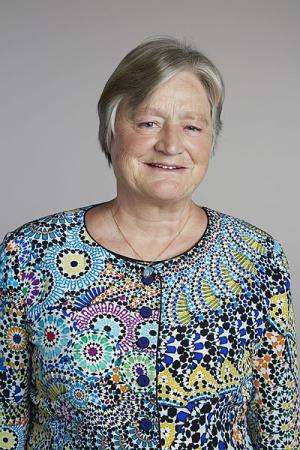Year born: 1950
Research Areas: Weather Forecasting, Tropical Climates
"I just like understanding how things work that I can see in the real world"
Source: The Guardian, Aug 2014

Early Life
Julia was born in Warwickshire, UK. Her parents were both teachers. She studied Physics at university and has a BSc and PhD from the University of Bristol.
Career Highlights
After university, Julia worked for the UK Meteorological Office (also known as the Met Office). This is the United Kingdom’s national weather service. Julia’s first job was learning more about clouds. Julia wrote computer code that improved scientists' understanding of clouds and the Earth’s atmosphere. She also investigated the effects of increasing amounts of carbon dioxide in the atmosphere.
From 2009 to 2016, Julia was the Chief Scientist at the UK Met Office. She led a team of more than 500 people. Her job was to direct and manage the research carried out at the Met Office. She had to think strategically about what kinds of science and technology were needed and what scientists could learn with it. Julia was Chief Scientist when the Icelandic volcano Eyjafjallajökul erupted in 2010. It was a difficult time for the Met Office. The public, government, and aviation industries were all demanding information. Julia says she enjoyed the challenge, despite the pressure.
Before becoming Chief Scientist at the Met Office, Julia worked as a scientist at several colleges and climate research institutes. One big change in climate science during Julia's career was the use of more and more satellites. These satellites help scientists understand and monitor the Earth's climate including the North and South poles. The other big change was the use of supercomputers to make more powerful climate models. Julia did research using complex weather and climate computer models. She wanted to better understand the Earth’s climate system and predict how it could change. Julia focused her research on monsoons and tropical climate.
Julia was the first female Professor of Meteorology in the United Kingdom. In 2008, she became the first female President of the Royal Meteorological Society. She championed the importance of communicating the dangers of climate change and gave advice to the European Union and the Secretary General of the World Meteorological Association.
Legacy
In 2014, Julia was made a Dame in the Queen’s New Years’ Honours List for her for services to weather and climate science. The World Meteorological Organisation presented its top award to Julia in 2016. The following year, the European Meteorological Society awarded Julia the Laureate of the EMS Silver Medal. Julia is a Fellow of the Royal Society.
